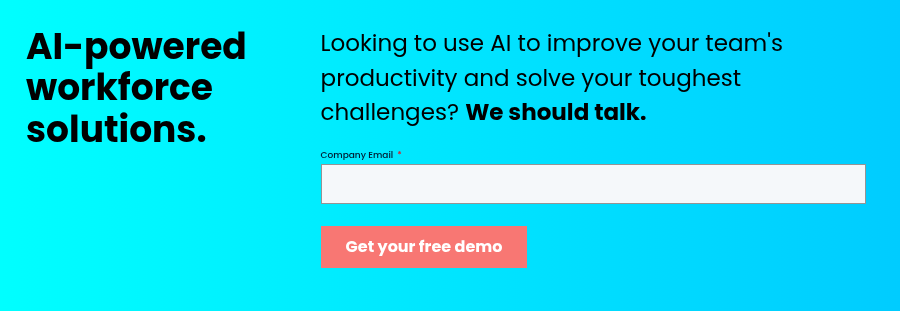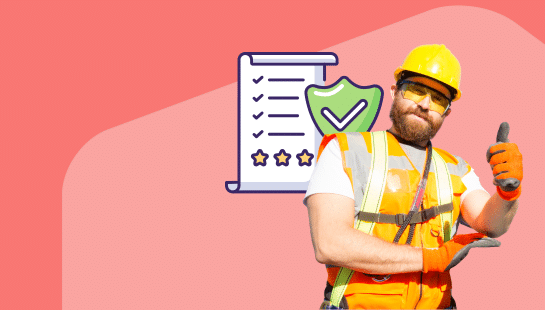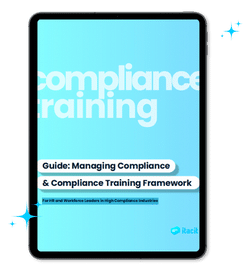AI for employee training applications have skyrocketed 800% among companies that offer AI courses through their learning platforms in the last year.
The global Learning and Development market has grown beyond $350 billion. AI technologies are changing how organizations train their teams faster than ever.
AI corporate training has evolved beyond just a trend. Experts predict the AI market in workplace learning will reach approximately $6 billion by 2025, and smart companies are already putting these solutions to work. This is a big deal as it means that two-thirds of organizations see their AI investments as successful with less than 50% ROI, proving value goes beyond just financial returns.
AI-based employee training stands out because these systems track skills, analyze performance, and build customized training plans for each team member. The tools can translate content into multiple languages instantly, which makes global training deployment smooth. AI-powered teaching assistants give immediate support and customized feedback right when learners need it.
This article will show you how to make use of these capabilities to build more effective, engaging, and flexible training programs for your organization.
The Evolution of AI in Employee Training
AI has revolutionized employee training in the last decade. Traditional training methods now seem outdated compared to the way we create effective learning experiences for today’s workforce.
From static modules to intelligent systems
Corporate training used to rely on standard methods like classroom teaching, group workshops, and off-site seminars. These methods didn’t work well for different learning speeds and personal needs. Planning these programs created problems with scheduling, resources, and locations.
As technology got better, company training changed from paper manuals and classroom sessions to digital tools and online courses. But even with these improvements, training materials stayed fixed, built around pre-made lessons that couldn’t adjust to how different people learn.
Companies first used AI in simple ways for their learning programs. We used it mainly to handle paperwork so teams could save time. This simple start barely showed what would become possible later.
AI now comes with more dynamic features. Companies can use smart algorithms and learner data to create training that responds to each person. This change marks a big departure from the old approach that treated everyone the same way.
“By 2025, 75% of businesses worldwide will have implemented AI-driven solutions in their employee development programs,” according to industry analysts. Companies are quickly moving away from old-school methods.
Today’s AI learning platforms give training teams tools that can check individual skills, understand learning priorities, and create experiences just right for each person. These systems adjust to each learner’s speed, choices, and progress. Traditional methods look limited in comparison.
Unlike fixed learning paths, where workers finish modules, take tests, and move step by step, AI helps training grow with each worker’s progress, knowledge gaps, and performance.
Why personalization is now essential
Generic training often fails to keep learners interested. Studies show that “93% of high-performing organizations agreed personalized learning supports an employee in reaching professional goals more efficiently”. This fact shows why personalized learning has become crucial.
Changes in workforce demographics make personalization even more important. Organizations now see more Millennials and Generation Z workers instead of Generation X. Training needs to appeal to these digital natives who want involvement, flexibility, and ground experience.
Personalization matters because:
- It raises employee involvement by up to 60% compared to standard approaches
- Workers remember and use what they learn better in ground situations
- Different employees learn in various ways and have different needs
- Teams can fix skill gaps before they hurt performance
AI offers a breakthrough for companies wanting to grow personalized learning. These systems provide highly customized training that fits each worker’s role, skills, and career goals.
AI’s ability to predict makes it even more valuable. By looking at past data and current trends, it spots skill gaps early and fixes them. Training teams can prepare workers for future roles and keep talent ready for upcoming workplace needs.
Modern AI works well for supporting workplace neurodiversity. CYPHER Learning’s 2024 survey of 4,500 workers found that 38% of Gen Z employees identify as neurodivergent. AI delivers content through videos, audio, and interactive simulations to suit different learning styles.
The corporate training market should reach USD $460 billion in 2027, growing 4.8% yearly since 2023. AI technology drives this growth by making employee training more effective, interactive, and empowering.
iTacit’s AI HR assistant shows this progress by supporting worker growth while reducing paperwork for training teams. The AI assistant identifies gaps in individual knowledge and patterns to help L&D tailor training to performance or career goals.
Companies now focus more on targeted learning programs that match both personal career growth and organization needs, moving away from broad compliance training.
Top Benefits of Using AI for Employee Training
AI brings remarkable advantages to employee training that traditional methods can’t match. Let’s look into into the key benefits that make AI revolutionary for corporate learning programs.
Faster content delivery
AI speeds up training content development significantly. Companies can now deliver relevant training materials quickly without the usual delays of traditional content creation. AI handles routine tasks like image formatting, simple course layouts, and original content drafts. This gives trainers time to add their expertise and customize materials for learners’ needs.
AI systems make content creation quick and analyze data automatically. This reduces time and resources. Your L&D team can now focus on strategic work instead of routine administrative tasks.
“The biggest contributor and change was caused by AI, allowing us to speed up the asset process,” notes Michael Quinstein, Director of E-learning at Welocalize. “Instead of hiring a person in a studio, we now have the luxury of using text-to-speech engines such as Synthesia, which allows us to speed up the time of delivery and lower the cost”.
Companies using AI for training cut their program management time by 30%. Those using AI-driven learning solutions saw a 45% increase in training program efficiency. This leads to increased efficiency and faster ROI.
Higher engagement and retention
Traditional training methods don’t deal very well with keeping learners interested. AI solves this by adding interactive elements that keep employees invested in their learning trip.
Interactive AI platforms can use quizzes, videos, and hands-on activities that turn passive learning into active participation. Research shows 72% of employees think AI-driven training tools are more engaging than traditional methods.
In the future, AI systems will watch learner behavior and give instant feedback. This creates a continuous improvement loop. Quick feedback is crucial in corporate environments where ongoing skill development helps maintain a competitive advantage.
It also creates individual-specific experiences based on each employee’s:
- Learning style and pace
- Existing knowledge and skill gaps
- Role-specific requirements
- Career development goals
This personalization increases employee participation by up to 60% compared to standard approaches. iTacit’s AI HR assistant shows this capability by analyzing employee questions to better suggest specific modules based on an employee’s progress and career goals.
Scalability across departments
AI excels at growing training initiatives across organizations naturally. AI platforms deliver consistent, high-quality training, whether you’re training ten employees or ten thousand, without extra costs.
Statista research shows organizations using AI for training save about $1.30 million each year. These savings come from:
- Less administrative work (automation cuts administrative tasks by up to 40%)
- Better learning pathways
- Improved content delivery systems
- No travel or physical infrastructure costs
AI tools handle language barriers that often make global training complex. AI-powered localization tools help companies deliver training in multiple languages quickly without traditional translation delays. This makes training available to teams spread across the globe.
Growing organizations find this scalability precious. AI helps expand learning initiatives as companies grow. It maintains quality while handling more learners without significant cost increases.
AI helps keep courses consistent by standardizing processes and ensuring uniform material quality, structure, and delivery methods. This matters for organizations with various departments needing standardized knowledge.
AI turns training from a departmental activity into a company-wide capability through task automation and smart content distribution. It adapts to each learner while meeting organizational goals efficiently.

Creating Personalized Learning Paths with AI
Personalized learning paths showcase AI’s main benefit for employee training. Traditional one-size-fits-all approaches fail to match natural learning patterns. Research shows that AI-powered personalization can boost employee engagement by up to 60%, which makes training more effective.
Tracking learner behavior and priorities
AI systems revolutionize training by collecting and analyzing data about employee interactions with learning materials. These smart tools assess each person’s:
- Skill gaps and existing knowledge
- Learning priorities and styles
- Performance patterns and progress rates
- Career goals and development needs
AI algorithms spot patterns that human trainers might overlook while collecting this data. A government health agency showed great results when they used an AI-driven platform that adapted training for public health workers based on their expertise and live needs. Their approach reduced training time by 40% and delivered more relevant content.
AI does more than track past behavior, it predicts future needs. These systems help prepare employees for upcoming roles by analyzing performance data and industry trends before productivity drops. L&D teams can now prepare their workforce for future changes.
“AI teaching assistants provide personalized feedback, reinforcing key concepts and ensuring that learners stay on track,” explains a training industry expert. These assistants assess progress continuously and offer guidance at crucial moments.
AI’s ability to handle different learning styles stands out as a major advantage. Since 38% of Gen Z employees identify as neurodivergent, supporting various learning approaches has become crucial. AI systems can present similar content through different formats, video, text, or interactive exercises, based on each person’s learning style.
Delivering just-in-time microlearning
AI shines at creating and delivering small learning modules right when employees need them. This microlearning approach offers quick information bursts that fit naturally into the workday.
AI and microlearning create a powerful combination. In the future, an AI learning management system might analyze employee schedules and deliver content during available moments, coffee breaks, commutes, or between meetings.
One example would be to create personalized experiences for frontline employees and their supervisors to improve their knowledge and performance. The system then creates content summaries and knowledge check quizzes automatically to keep learning materials fresh.
AI makes sure microlearning content tackles specific employee challenges effectively. The system could, for instance, recommend relevant short courses or quizzes immediately when someone struggles with data analysis.
Machine learning algorithms make AI-powered microlearning special by updating their understanding of each employee’s knowledge continuously. This creates a dynamic learning experience that grows with the employee’s expertise.
AI-powered chatbots offer quick help without disrupting work. A training professional notes, “With AI chatbots, learners can get immediate answers and guidance without breaking their workflow”. This instant support helps employees stay productive while learning.
iTacit’s AI HR assistant demonstrates these features in action. The system looks at individual metrics and patterns to better suggest specific modules based on career goals and past performance. Employees develop exactly the skills they need for their career paths through this targeted approach.
Organizations must plan carefully when implementing AI-powered personalized learning despite these benefits. They need to balance personalization with consistent core training. Human oversight remains essential to ensure AI recommendations match broader organizational goals.
AI Tools That Power Modern Training Programs
AI tools have revolutionized modern employee training by making learning more available, interactive, and easier to grasp. These technologies reshape the scene of workplace education through professional video creation and personalized content delivery.
Text-to-video platforms
Text-to-video AI tools have become crucial for creating professional training content without complex production work. These platforms help you turn written scripts into compelling videos within minutes instead of days.
DuPont’s Operational Excellence team cut video production costs by $10,000 per training video by switching to AI-generated content. The instructional designers at Zoom reduced their video creation time by 90%, turning days of work into just hours.
More than half of Fortune 100 companies use Synthesia. The platform gives users over 230 AI avatars and voiceovers in 140+ languages. This variety helps create inclusive training materials that strike a chord with teams worldwide.
Other notable platforms include:
- Vyond – Popular for GoAnimate voices and intuitive interface
- Elai.io – Provides text-to-video conversion with 65+ languages and 80+ avatars
- LTX Studio – Specializes in branded storytelling for campaign-based videos
BSH saw a 30% increase in e-learning engagement after moving from text-based modules to AI video content. Visual learning boosts information retention better than text-only formats.
Teams no longer need actors, studios, or expensive equipment. Content updates happen with just one click whenever policies change or information needs refreshing.
Natural language processing for content creation
NLP gives L&D teams powerful tools to create, personalize, and manage training materials. These AI systems understand and generate human language, which speeds up content creation by a lot.
Research by the Educational Technology Consortium revealed that educators using NLP tools spent 68% less time creating assessment items and 52% less time developing explanatory materials. Training teams can now prioritize strategy over routine content development.
NLP keeps content remarkably consistent. Wilson’s research showed a 34% improvement in cross-class assessment performance when NLP tools maintained terminological consistency across different course sections.
NLP excels at creating personalized experiences. Hammond and Lewis proved that NLP-generated personalized learning materials boosted student engagement by 47% compared to standard materials.
Corporate training benefits from NLP tools that analyze individual learning patterns to deliver content matching each employee’s needs. This feature lines up perfectly with iTacit’s AI HR assistant, which studies performance data to suggest targeted training modules.

AI avatars and multilingual support
AI avatars help organizations deliver training to global teams more effectively. These digital presenters share consistent messages while maintaining a personal connection with learners.
BESTSELLER, a prominent fashion company, employs AI avatars to reach thousands of employees while cutting down classroom time. These avatars create an interactive learning environment that feels more personal than traditional videos.
AI avatars do more than just appear on screen. Google Translate achieves about 94% accuracy for many languages, enabling real-time translation that makes content available worldwide.
AI-powered chatbots give immediate multilingual support during training sessions. Studies show that AI-driven personalized learning improved language proficiency by 48.53% compared to traditional methods.
Learning designers use AI avatars to tackle pronunciation challenges. Many platforms let you add alternative pronunciations or phonetic spellings for technical terms or names. This precision helps prevent confusion in specialized training.
Voice customization improves engagement naturally. Adjusting tone and pace creates more relatable training content. Many platforms offer accent switching or neutral accent options that work in different cultures.
These technologies continue to advance, creating a continuous connection in training that feels personal yet remains adaptable across organizations.
Gamification and Immersive Learning with AI
Gamification turns regular employee training into an exciting experience that helps people learn better and stay motivated. Companies now use AI to create tailored gaming elements that work well at scale.
Using AI to personalize game mechanics
Points, badges, and leaderboards make up traditional gamification tools to motivate learners. These static rewards become less exciting as time passes. AI completely changes this by adapting game elements to match each person’s needs and behaviors.
The AI system watches how motivated learners are through up-to-the-minute data analysis. The system gives smaller, frequent rewards to rebuild confidence when employees face difficulties. AI creates tougher “quests” to keep high-performers interested and prevent them from getting bored.
Research proves this tailored approach works well. Teams using AI-personalized gamification finish 15-20% more training modules. AI creates quiz questions and interactive simulations faster. This makes gamification available to companies of all sizes.
AI’s adaptive engine works quietly in the background to analyze:
- Learner performance metrics
- Skill progression patterns
- Decision-making tendencies
- Engagement indicators
AI uses this data to adjust everything from difficulty levels to reward timing. To cite an instance, someone who finds data analysis hard might get small badges more often. Someone who learns quickly gets harder challenges instead.
AI makes training feel like a personal adventure. Picture leadership training where AI avatars act as executive consultants. They give instant advice as employees make decisions, like having a personal mentor without coffee breaks.
VR/AR simulations for hands-on training
VR and AR training have become powerful learning tools. Companies see great returns from these immersive experiences. They help people learn skills faster while cutting training costs.
AI makes these benefits even better by adjusting scenarios in real time. Having trouble with angry customers? The AI changes how the virtual customer reacts. Doing well in every module? The system makes things harder. This creates learning experiences that match each employee’s skill level perfectly.
Medical training shows this power clearly. Surgeons practice procedures safely in VR while AI suggests technique improvements. Credit Agricole lets staff practice with AI bots. These bots give instant feedback about posture, tone, and decisions during customer interactions.
AR applications work just as well. Engineers wearing AR glasses get AI-generated instructions while learning complex procedures. This mix of visual guidance and real-life application helps people remember what they learn better than old-school methods.
Immersive learning creates strong emotional connections. Employees don’t just learn ideas, they live them. This hands-on quality builds stronger memories than traditional training ever could.
iTacit’s AI HR assistant makes these immersive experiences better. It tracks employee questions and responds with the right information. In the future , this the next best module based on progress. This creates smooth learning paths that grow with employees.
Companies using AI-powered immersive learning get more than just engaged employees. These systems collect valuable data about skill gaps, performance improvements, and learning patterns. This information helps make training programs better over time.
Real-Time Feedback and Predictive Analytics
Companies now utilize AI-powered analytics to revolutionize workforce development. This fundamental change moves away from reactive training to proactive skill development.
Identifying skill gaps before they grow
AI-powered predictive analytics uses historical data and statistical algorithms to forecast future learning needs. Companies can detect potential skill gaps early and gain a competitive edge before these gaps affect performance.
A 2022 survey revealed that executives expected 38% of their workers would need “fundamental retraining or replacement” within three years to address workforce skills gaps. AI tackles this challenge through “skills inference” – analyzing employee data to measure skills proficiency and find areas that need improvement.
Johnson & Johnson showed this approach with their 4,000 technologists. They built a taxonomy of 41 specific “future-ready” skills and used a large language model to measure each technologist’s proficiency on a 0-5 scale. This data created heat-maps of technology skills proficiency by geographic region and business line, which helped target development investments.
AI excels at analyzing data to spot where employees need additional training. As Luke Megarity, COO at iTacit explains, “Our AI HR assistant can identify potential skill gaps months before they affect productivity, which gives teams time to address them proactively.”
Adapting training based on performance data
AI-powered analytics help refine learning experiences continuously based on performance data. The system can:
- Provide tailored support to struggling learners
- Adjust difficulty levels automatically
- Recommend targeted resources at the right moment
- Assess which training modules work best
Machine learning technologies track each employee’s performance throughout their learning experience and gather valuable insights on progress. AI makes adjustments based on these observations to maximize training effectiveness.
Results prove the success. Johnson & Johnson saw a 20% increase in professional development platform usage after implementing skills inference analytics. Their learning platform reached 90% of technologists within a year.
Companies that use predictive analytics can spot employees who might miss performance targets due to skills gaps. This knowledge enables tailored interventions that improve performance and reduce turnover.
AI-driven systems analyze which training methods produce the best results. Companies can justify their investments in employee development to stakeholders by measuring ROI of learning programs.
Live feedback combined with predictive analytics has revolutionized how organizations approach employee development. Companies now focus on strategic workforce preparation instead of reactive training.
AI HR Assistants: The New Learning Partners
AI-powered HR assistants serve as valuable learning partners in modern corporate training environments. These digital tools change how employees access knowledge. They also transform how L&D teams handle their workload.
How iTacit’s AI assistant supports employee development
iTacit’s AI Assistant places company policies, SOPs, and training documents within easy reach of employees. Staff members can ask questions and receive instant, role-specific answers drawn from the organization’s knowledge base. This quick access reshapes workplace learning.
The numbers tell a compelling story. 87% of users say the AI Digital Assistant helps them find answers more easily than before. Easy access creates an environment where employees get significant information exactly when they need it.
This AI assistant stands apart from regular chatbots in two ways. It pulls answers only from materials employees can already access. The assistant also delivers role-specific responses that match the right information to the right person at the right moment. These features connect formal training sessions with ground application.
The assistant goes beyond answering questions by providing practical insights. To cite an instance, it might alert: “This month, the Washington team has repeatedly asked about logistics issues”. These patterns reveal where teams need more training or better documentation.
Reducing admin load for L&D teams
L&D departments used to spend endless hours answering the same questions. iTacit’s AI assistant has changed this situation. Management teams now save 4.5 hours weekly they once spent on employee questions.
Teams save time through:
- Automated responses to common questions
- Quick access to training materials
- No manual searching through documents
- More time for HR professionals to focus on strategy
93% of HR users were surprised by their employees’ search patterns. These discoveries help L&D teams spot knowledge gaps they might otherwise overlook. Dashboard data shows what employees ask about. Teams can improve content and make smart decisions about future training needs.
The AI assistants like iTacit’s create a better-informed workforce and more productive internal teams. These AI partners handle routine questions automatically. L&D professionals can now concentrate on strategy instead of repetitive tasks.

Overcoming Challenges in AI-Based Employee Training
AI brings powerful capabilities to employee training, but organizations face several critical challenges to implement these systems. The way companies handle these hurdles will affect their success and employee trust.
Data privacy and ethical concerns
Data protection stands as a fundamental challenge in AI-based learning management systems. AI tools collect so much personal information to create individual-specific learning experiences that safeguarding this data will give a strong foundation for trust and compliance with regulations.
Companies need to strike a balance between data collection needs and privacy protections. Statistics show that 75% of companies don’t deal very well with data quality issues in their AI efforts. This affects both training effectiveness and data security.
Here are the core privacy areas to think about:
- Creating strong data minimization practices
- Using anonymization and pseudonymization techniques
- Securing sensitive information with encryption
- Setting clear data retention policies
Bias in AI algorithms presents another most important concern beyond privacy. Algorithmic bias could lead to unfair outcomes in job promotions, hiring decisions, and performance assessments if left unchecked. As one Harvard researcher notes, “AI not only replicates human biases, it confers on these biases a kind of scientific credibility”.
Ensuring inclusivity and human oversight
Human judgment remains irreplaceable in AI-powered training. People possess the moral compass to align decisions with organizational values even as AI analyzes data efficiently. This human element helps prevent discrimination and ensures fair training opportunities.
Inclusivity challenges continue in AI training implementation. Research reveals that 72% of companies do not extend upskilling benefits to all employees. On top of that, women’s unequal access to AI training resources threatens to reinforce gender gaps in tech-focused careers.
The core team needs more than technical expertise to provide effective oversight, they must understand ethical considerations and societal implications of AI decision-making. AI becomes a tool that respects human autonomy while enhancing learning experiences under careful supervision.
iTacit’s AI-powered HR assistant shows this balance by providing individual-specific learning recommendations while maintaining appropriate human oversight to protect against potential risks or errors.
Conclusion
AI-powered employee training has altered the map of organizational talent development. Static, one-size-fits-all approaches have given way to dynamic, tailored learning experiences that adapt to each employee’s needs.
Raw data tells the story. Companies using AI for training see remarkable results – 30% less training time and 60% higher employee involvement. These figures represent clear competitive edges in an ever-changing business world.
AI combined with VR/AR simulations and gamification opens new doors for hands-on learning. Employees now experience best practices in immersive environments that adapt to their performance.
This technology stands out because it creates learning experiences previously impossible at scale. Each employee gets individual attention without extra human resources or budget.
AI’s predictive abilities shift training from reactive to proactive modes. You can address skill gaps before they affect your organization. This approach keeps your workforce ahead of industry shifts.
iTacit’s AI-powered HR assistant shows these advantages by delivering instant, role-specific information while cutting administrative work for L&D teams. The tool’s impact speaks through the 87% of users who find information access easier.
Challenges exist. Data privacy concerns and potential algorithmic bias need careful monitoring. Human oversight plays a vital role to retain control and inclusivity in training programs.
AI will keep reshaping employee development as technology grows. Successful organizations will balance state-of-the-art technology with human wisdom – employing AI to enhance human potential rather than replace it.
Your strategy must match AI capabilities with clear organizational goals and learning objectives. Small steps, measured results, and expansion based on proven success lead the way.
Employee training’s future goes beyond tailored experiences – it becomes predictive, adaptive, and self-improving. The right AI implementation helps build a learning ecosystem that grows stronger with each interaction.










